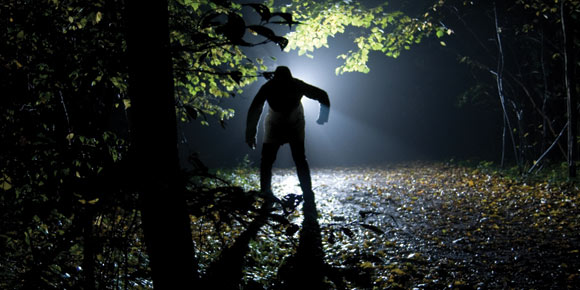by Bruce Cherney
A woman was so spooked by what she saw one evening in the cemetery that she fainted. That was just one instance of fright brought on by a ghost believed to be haunting St. John’s Cemetery.
On September 11, 1903, the Winnipeg Telegram reported the presence of a spectre clad in fluttering white undergarments inhabiting the cemetery. The graveyard ghoul was said to become visible whenever the moon came out from behind a cloud and cast its eerie glow earthward.
By 1903, St. John’s on Anderson Avenue in the North End already had a long history in Winnipeg. It was founded as the first Protestant church (Anglican) in the then Red River Settlement by Rev. John West in 1822. Over the years, the cathedral has undergone many structural changes. The present form of the cathedral dates to 1926 and is today noted for its elegant stained glass windows.
The age of its cemetery — it predates the cathedral and was used as early as 1812 — and the fact that many missionaries and prominent citizens were buried in the graveyard perhaps contributed to a healthy dose of wild speculation about the nature of the moonlit apparition in 1903.
This was an era when superstition was rampant. And the approach of Halloween may have added to the fear and speculation about what was lurking in the nighttime shadows at the cemetery.
The early Irish, Scottish and English settlers brought to Manitoba the celebration of Halloween, which was a throwback to ancient pagan Celtic rites marking the end of the harvest season and the onset of winter, or the “darker half” of the year. The dead and other spirits (both good and bad) for one night of the year on October 31 were said to communicate with the living during the Celtic festival of Samhain (Lord of the Dead). The Welsh called it Calan Gaeaf and the Celts in France had a similar festival.
The festival was held on the eve of the pagan New Year on November 1. During Samhain, huge bonfires were lit to encourage the sun to again warm the Earth, the priestly-class of Druids sacrificed humans and animals, and long-dead ancestors were honoured and invited home for “treats,” such as food, while evil spirits were warded off by “tricks,” such as wearing disguises that included masks and costumes.
When the Christian church was established in the British Isles, it reinvented the most important pagan festival as All Saints’ Day, or All Hallows’ Eve, which was celebrated on November 1. Over time, All Hallows’ Eve returned to its pagan roots and was celebrated on the evening of October 31, a day before All Saints’ Day. All Hallows’ Eve was eventually shortened to Halloween.
Halloween traditions in Canada were readily accepted by Eastern and Western European immigrants, such as Germans, Icelanders, Poles and Ukrainians, whose native folklore related tales of spirits in one form or another roaming the earth.
“Have you heard anything new about the watcher among the graves,” was apparently a common opening for conversations among residents of St. John’s Parish in September 1903.
William Binzier, the sexton of St. John’s churchyard, heard the reports which he “took with a grain of salt.” The skeptical sexton did not believe in “spectral visitations” or “ghostly friends.”
But as the tales became widespread among local residents, Binzier began to feel there might be some foundation to the reports. To discover the truth behind the “watcher,” Binzier one night took up a strategic hiding place behind a clump of bushes in the graveyard.
He stifled a yawn as the city hall clock tolled 11 p.m. and began to think that the stories had been concocted simply for amusement. In fact, Binzier began to believe that a great joke was being played on him.
“At the witching hour of midnight he yawned again,” reported the Telegram. “The night was cold, so he determined to go home. He started for the gate. As he did so the moon came from behind a large black cloud, and, scarcely ten feet from him, a figure stood by a grave clad only in a single white garment. The moon was again enveloped by another black cloud, leaving only the motionless white form and the grave stones, dimly visible. His courage almost deserted him, but the moon again shone out and revealed the figure of a real live man.”
After swallowing a lump in his throat, Binzier approached the very alive man and asked, “What are you doing here?”
“I have no place to sleep and am too sick to work,” the man replied, “so I brought my blankets here to lie in peace.”
“Well, this is no place for you,” Binzier said. “You must find somewhere else to sleep.”
While Binzier watched, the man hurriedly dressed himself, got his camping gear together and spirited himself off to St. John’s Park where he spent the remainder of the night and every night thereafter trying to get a good night’s sleep.
Binzier proved the man, who “showed up with ghastly distinctiveness” each time the moon came out, was just a homeless person whose chalky white spectral countenance was the result of a serious illness. It was a case of a ghostly appearance and clothes normally associated with troubled spirits contributing to rumours of a spectre taking up residence in the graveyard. It also showed how overactive imaginations can jump to irrational conclusions.



